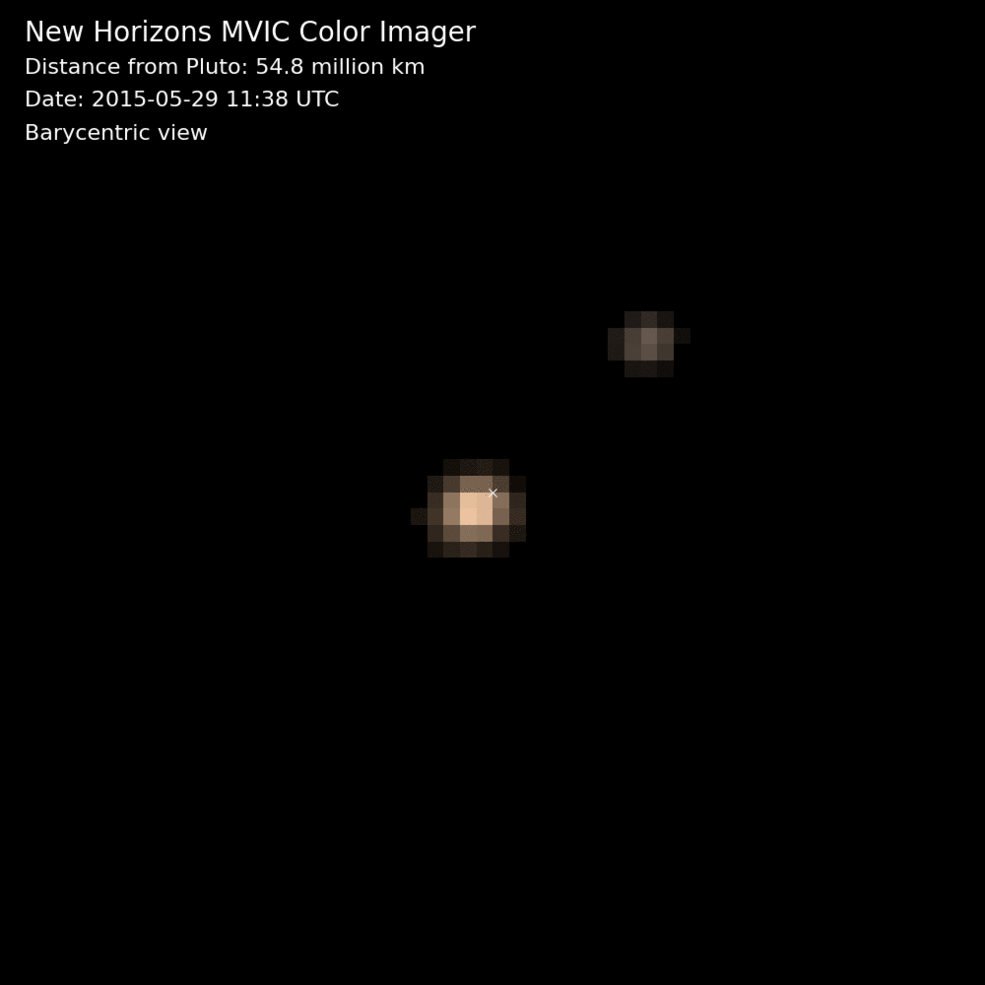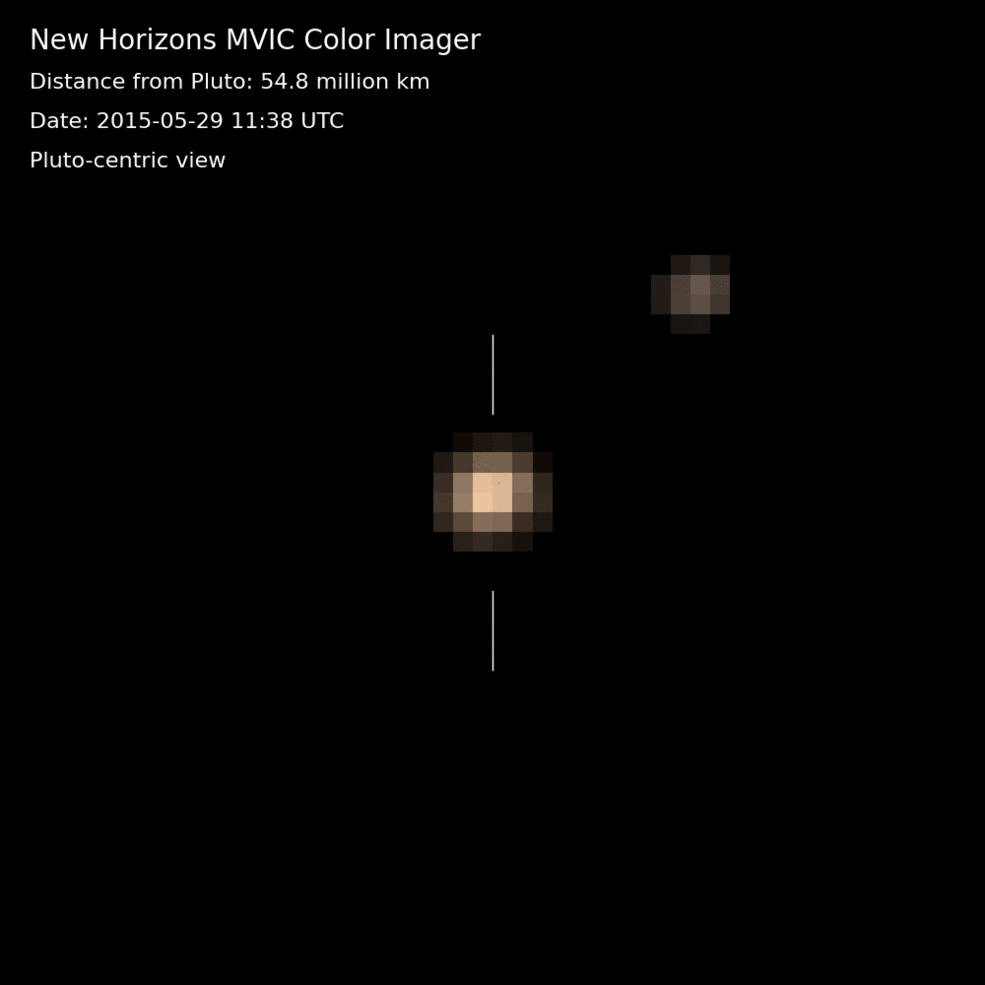The first color movies from NASA’s New Horizons mission show Pluto and its largest moon, Charon, and the complex orbital dance of the two bodies known as a double planet. The images were taken on nine different occasions from May 29-June 3.

The New Horizons spacecraft will make its closest approach to Pluto on July 14, zipping by about 7,800 miles (12,500 kilometers) above the surface. It’s the first mission to Pluto and the Kuiper Belt, a relic of solar system formation beyond Neptune.
Alan Stern is New Horizons Principal Investigator. Stern said:
It’s exciting to see Pluto and Charon in motion and in color. Even at this low resolution, we can see that Pluto and Charon have different colors—Pluto is beige-orange, while Charon is grey. Exactly why they are so different is the subject of debate.

Enjoying EarthSky? Sign up for our free daily newsletter today!
These near-true color movies were assembled from images made in three colors — blue, red and near-infrared – by the Multicolor Visible Imaging Camera on the instrument known as Ralph, a “Honeymooners” reference that classic TV fans can appreciate. Although the two movies were prepared from the same images, they display the Pluto-Charon pair from different perspectives.
As New Horizons closes in its intended target, the best is yet to come. Cathy Olkin is New Horizons deputy project scientist. She said:
Color observations are going to get much, much better, eventually resolving the surfaces of Charon and Pluto at scales of just kilometers. This will help us unravel the nature of their surfaces and the way volatiles transport around their surfaces. I can’t wait; it’s just a few weeks away!











